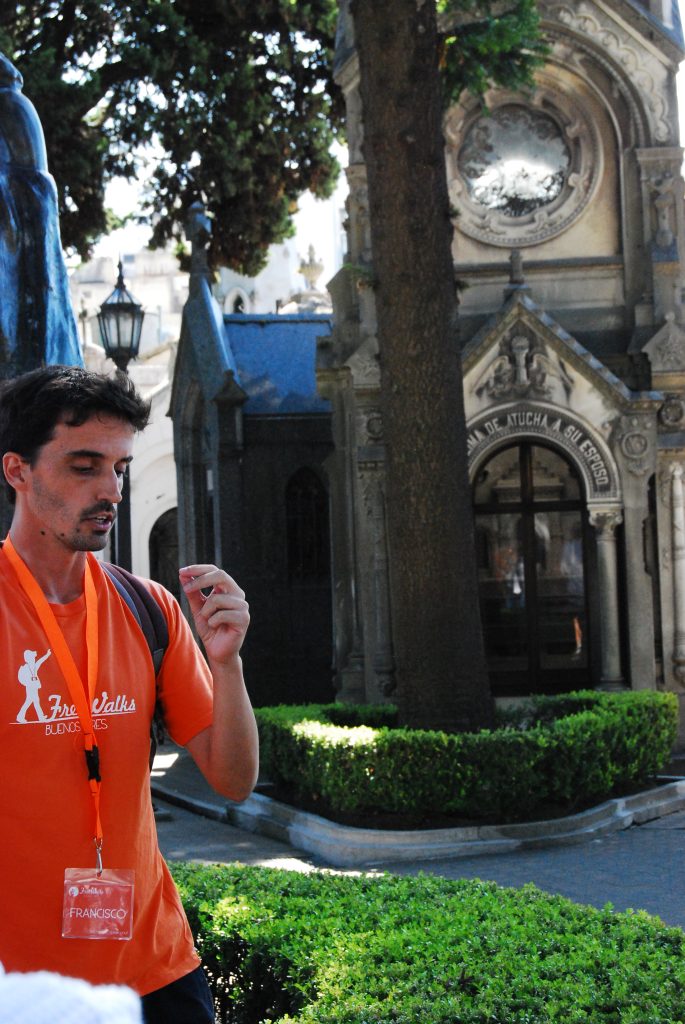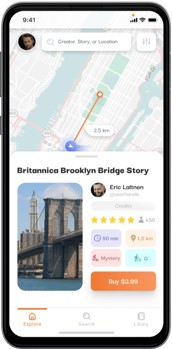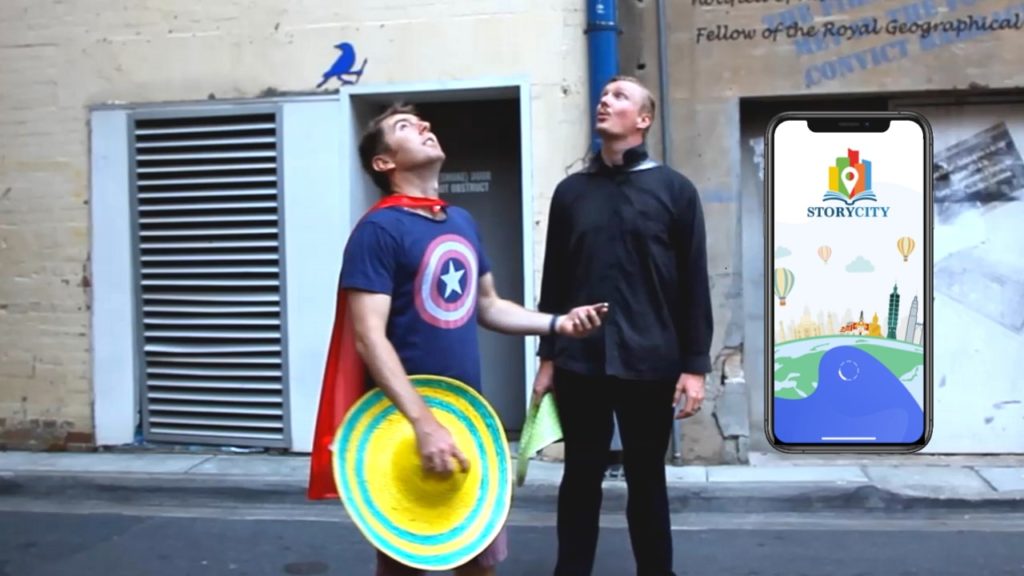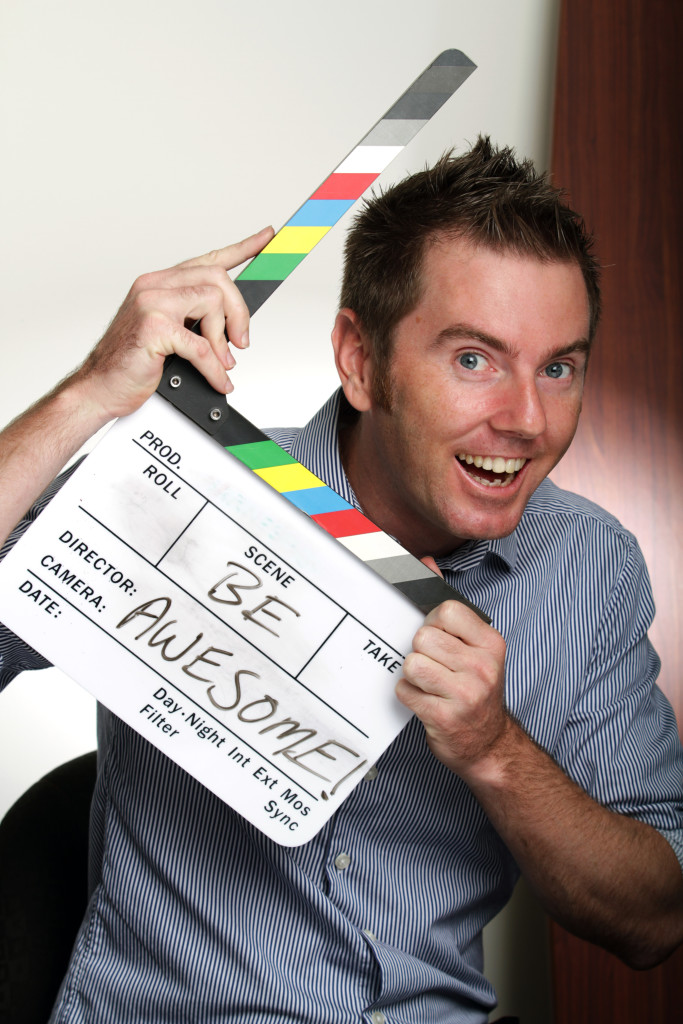When Story City Creator, Nick Manning, asked if we would write some advice for his updated edition of ‘How to Be a Tour Guide’ we of course said yes! He also very kindly said we could share the advice we wrote via our blog too, so you have him to thank for this (maybe by checking out some of his brilliant books, or Story City adventures *wink wink nudge nudge*). We hope you find this helpful on your journey. We have dozens more resources like this one for our creators at Story City which you can easily access by becoming a creator (for free!) at storycity.app
In this in-depth except from the book, we’ll talk about the all important question, will digital or self-guided tours lose me business, and if I make a digital tour, how do I make sure it stands out?
The Audio Version
We get it, sometimes this stuff is easier to listen to. Many thanks to Nick and his fabulous audio book voice actors for providing this audio book alternative to the article!
Hello intrepid storyteller and world traveller! Welcome to the future! It is slightly less shiny than we thought it would be, but it’s still full of promise.
The major hang-up people seem to have about creating virtual tours is the worry that their digital offerings (which historically are cheaper than in-person tours) will cannibalise their existing business. Basically, luring away people who would normally take the more expensive in-person tour.
Let’s start by addressing this issue (hint: it’s false). Virtual tours, when done right, will actually add to your existing business, not detract from it. In-person and digital offerings work in tandem to not only create a fail safe should you be unable to run tours in the future, but also as a potential way to increase revenue based on the personal preferences of your client.
Will Digital Tours Impact My In-Person Tours?
This was a major fear when e-books came on the scene in the early 2010s. The industry freaked out, surely publisher sales would plummet and the physical book as we know it would be done for.
But that’s not what happened.
What happened was that those newer generations who embraced technology and rarely purchased new physical books dived in, buying more frequently than when they had to save their pennies (and their shelf space), and those who preferred ‘real’ books continued to, you guessed it, buy their paperbacks. The industry as a whole grew, and digital books now make up about 21% of the now larger market having plateaued at that level. We didn’t end up with the book apocalypse. Those that wanted digital versions got it, and spent more, and those that didn’t kept doing things the way they always did.
The moral of the story is that people will go for the format that feels natural and convenient for them. And while we may all have a preference, if the only other option that exists is the ‘other’ one, then we will go for the less natural option rather than go without.
I’m the prime example of this. As a Millennial you’d think I’d be all digital, all the time. But as a voracious traveller I love the social interaction that comes from an in-person tour. It is my preference to be able to turn up, ask questions, crack jokes, and make friends. But if the street art photography tour I want only runs on a Friday morning at 10am and I’m leaving on Thursday afternoon, I will 100% lay down money for a digital version I can do at any time so that I can see that epic mural I’ve seen a million times on Instagram in-person with a knowledgeable guide. Bonus points if you’ve scored an interview with the artist I can listen to.
If you were the tour guide that ran that tour, and only in-person, you would lose me as a client without ever knowing.
And I get it, it’s not economical for you to run a tour every hour of every day, you have to pick set times and itineraries to make it pay-off for you. But if you add in a digital version of your tours to compliment your in-person services, this allows for you to net a bunch of additional revenue for many different scenarios.
Such as:
- Your clients can’t be there at the right times,
- Your client is wary of large crowds after COVID,
- Your client doesn’t speak xyz language fluently so requires a written script to properly understand the audio,
- Your client has mobility issues and can’t attend normal working tours because they can’t walk as fast as an able-bodied person,
- Your client prefers to pre-purchase experiences before they leave to minimise the cash they need (very relevant to your free walking tour guides!),
- Your client is an introvert and would prefer to self-guide rather than deal with people,
- Or your client simply doesn’t have the cash to swing an in-person tour.
- And maybe, just maybe, a client wants to try a lower-priced offering before they buy a higher priced multi-day offering from you. Digital products can be great lead generators.
All these scenarios are ones that can’t be covered by traditional models of tour guiding but can net you additional revenue and potentially repeat business – as tour guiding is less about the information and more about the personality delivering that information, you!
As with many digital revolutions the sad fact is that the technology is coming whether you want to acknowledge it or not. Those that don’t try to incorporate technology that makes their experiences more convenient and automatic will find they start to lose out to the competition that does.
But How Do I Make Digital Offerings Interactive & Engaging?
I probably should have introduced myself before now, I’m Emily, I’m the CEO of an interactive storytelling platform called Story City, which allows any creator – from tour guides, to film makers, to game designers – to create stories and tours that only open in the right location using the GPS on your phone. The platform is 100% free for creators (that’s you), Story City just takes a small commission whenever you sell an experience.
But we’re not just a self-guiding tour app, we’re an entertainment app which hosts everything from real-life choose your adventures where you’re a pirate looking for pirate treasure, to puzzle trails where you’re solving clues to uncover a mystery, to behind-the-scenes of film locations, interactive documentaries, and more.
So, you could say that I’ve become a bit of an expert on how to make digital content interesting, interactive, and conversational. There are several key lessons we’ve learnt throughout the years, both pre, during, and post pandemic that I’m going to share with you here to really make your virtual walking tours feel like the real thing:
1. Interactivity Via Location
If we look at the stories that truly have captivated us in our lives, they are the stories that invite you to step into them and interact with them. To connect on a deeper level than consumption of the story. Because the best stories go beyond consumption, go beyond self-reflection, and instead they demand a response. Whether it’s playful, emotional, creative, or an action.
There is power in geolocating stories and literally making you walk in the shoes of another person. Because locations have gravity, a special kind of magical draw. When you are physically there, in a space, presented with a story that is happening right there, it is so close you can almost touch it. All of the most powerful stories in your life are inextricably linked to a specific place. Where you had your first kiss, where you learnt to ride a bike, when you first learnt to love, to hate, to judge, or to forgive.
As soon as you start exploring the effects of this, it becomes clear very quickly how the sharing of location-based digital stories with the public can literally change the vibrancy of a city. Stories in a particular location are the roots of patriotism, they bind communities, and connect people, and the telling of them in the visceral 4D landscape of public space gives those who engage with this combined digital/real world experience not only a mental connection but a physical one, all guided by you. This is the advantage of locative storytelling over passive storytelling formats (and yes, I would consider live streams to be fairly passive). It gives us the power to humanise our country, our people, our homes, our culture – to build a bridge of understanding.
So, ‘virtual tour’ doesn’t mean ‘stare at a screen and do nothing else.’ Try and give your clients a physical experience to accompany the digital one. Get your clients out of their house, walking the trail you’ve created! It will help commit them to the experience.
The next element that really allows you to create a feeling of conversation, engagement, and interactivity is…
2. Interactivity via Media
We unfortunately don’t have holographic technology just yet that allows you to broadcast yourself when a client hits the next location in their tour (#lifegoals) but we do have the ability to build a pre-recorded transmedia experience that mimics the real thing. The term ‘Transmedia’ just means that you are using the best media format to tell your story. The type of media formats you choose whether they be video, text, audio etc. depend on the level of immersivity that you want for your adventurer. But also, on the level of accessibility that you want.
For example, audio allows your client to look around the space as you talk, and even undertake actions or tasks that increase the interactivity of the experience for them. Whereas video allows for you to overlay historic photographs, show off a costume for a festival that runs in that location every year, lets you see the ball drop in Times Square, or a local chef cooking your favourite street food in Mexico, or an interview with the owners of that local mom and pop shop you stop at every trip. Perhaps you include a sign language interpreter in your videos or text to account for the hearing impaired.
Below are several transmedia components that you might want to consider including in your virtual tour:
- Written Text/Script: This allows you tolink the location to story and bring people’s focus to the interesting features. An added bonus is people can check the names and spellings of things, and those from different languages groups can follow audio easier. It also makes your tour accessible to the hearing impaired.
- Narration/audio: In addition to allowing people to be able to look around and take in the location while you speak, narrationgives tone and drama to your information in a way that a guidebook never could. It also allows people to be more aware of their surroundings than a video in areas where pickpockets or snatch-and-grabs may be an issue.
- Music: Builds atmosphere, creates mood, and adds a next-level dimension and professionalism to your audio that other tour guides may not take the effort to invest in.
- Images/video: Whether you want people to connect with you on a deeper level because they can see your facial expressions, or you decide to give a re-enactment in costume, or because you want to show off historic photographs, or festivals/events that may not be present 365 days of the year, images and video help people imagine the things you are describing to them in animated detail. This also allows you to record questions people ask on in-person tours which you can then answer and append to the information at that location at a later date, just in case someone taking the self-guided tour is also interested in the answer.
- Performances: Perhaps there is an amazing street performer you like to introduce people to, or you work with a local street artist to do a fast forward recording of them creating a piece, or there is a chef that gives an amazing demonstration of a dish, or a mask maker or glass blower who only demonstrates for an hour a day and most people miss him. By adding in performances and demonstrations it allows you to stand apart from other guides who stick to the straight history or facts. Plus, you could get commissions from partnering with these businesses or purveyors if your client stops there on their tour!
You can also give a feeling of unpredictability and adventure in self-guided virtual tours by including…
3. Interactivity Via Choice
At Story City I specialize in helping creators make branching narratives, also known as choose your adventures. The great thing about a choose your adventure is it allows for you to cater to specific niches of interest in a way that is interactive and fun and makes your client the hero of their own adventure.
Full disclosure, it’s a lot more work than your usual guided tour because you’re including more sites – some of which the guest may not visit – but if you’re up for the challenge, it really makes you stand out from the crowd!
How does it work?
Well at the end of your spiel for each location, you give your adventurers a choice between visiting two different locations. You might theme these branches where in one direction someone will learn more about art, and in another direction ancient history, and in another direction modern history.
It is a really simple way to give the illusion of a ‘unique’ tour for every client, either by content selection or by them ending up in a different location to someone who chose differently. It also has the added bonus where an adventurer can pick only the topics that interest them rather than being bored by additional information that has them dropping out of a tour early (before they have given you that all important tip!).
You can even do branched stories on a tool like Story City, where each branch is still in the same location, say the Colosseum, but down one branch you’ll hear the story of a young gladiator, and down another branch you’ll hear about the architectural restoration of the monument. Heck, at the end of each of those stories you could even give them the choice to also listen to the other story they didn’t pick before moving on.
The key to setting up interesting choices is to make sure each choice has a story ‘hook’ as to what the client will learn in each choice. If you make each choice equally enticing for the adventurer too, you can also leverage FOMO to have a client gushing at the end in reviews about how they went back to do the tour a second time because they couldn’t stand not hearing the other stories!
And now we come to our last method of making a self-guided virtual tour feel like the real thing…
4. Interaction Via Gamification
The great thing about digital tours (especially if they’re taking these tours in their corresponding real-world locations) is that you can add in gamification elements that simulate the interactions you would have previously facilitated in person, or that people might not do if they were in a group due to shyness/embarrassment. I would break these into three categories:
- Promote Spatial/Community Engagement: Encourage interaction with community features, for example:
- Climbing to the top of a rock or playground to fetch something, or maybe skipping stones in an ornamental lake. Or knocking on a fairy tree and singing a song.
- Challenges like a dance challenge, or talking to a local shop owner
- ‘Find a thing’ type I-Spy game challenges (maybe adventurers can post these to social and those with the most things found correctly win a prize?).
- Promote Conversation: The best way to do this is via some sort of creation or user generated content, such as:
- Create something to play with or leave behind for others to discover (stick men, bark boats, a circle drawn in the sand etc). Though please keep in mind the culture and history of the landmarks you are visiting – keep it respectful and reduce any harm that could be done.
- Using chalk to draw on the pavement or leave post-it notes with a positive message in the window of a local café you have partnered with.
- Ask for user generated submissions of stories from their tour, get them to act out scenes from history, or share their favorite piece in a museum and post it via social media with a hashtag chosen by you (maybe they could even win a prize for best submission!).
- Promote Play: Via clues or puzzles which need solving before the next piece of the walk is unlocked. This could take the form of a word play puzzle, trivia, or even a multiple-choice question. Puzzles provide a gentle yet fun way to educate.
And that’s it! My top tips for creating a virtual tour to blast all other virtual tours out of the water. Depending on your comfort level you can chose to use just one element or all four, after all it is your adventure 😉
Become a creator for free at Storycity.app
About How to be a Tour Guide: The Essential Training Manual for Tour Managers and Tour Guides
Travel the world and discover a job you love.
Whether you just want a job that lets you travel the world for free, or you’re looking for a career that lets you set your own hours and do what you love, this book will show you how to become a tour guide with clear, practical advice and easy to follow steps.
It will teach you what you need to say, how to advertise your services and how the pros make their money (and get great tips!). It will teach you how to start your first tour, how to get repeat business after you’ve finished it and even what life is really like ‘out there on the road.’
Written by a Tour Guide with guided tour experience in over 15 countries, and with contributions from experts all across the world, there’s no better way to start one of the best careers in the world than with the ultimate reference book and training tool – as used by Tour Guides across the world every day.
Covering topics such as:
- How to plan, design and price your first tour
- Effective offline and online marketing strategies that work
- How to research
- How to ‘value add’
- Leading and controlling large groups
- How much you can realistically expect to earn
- Common industry jargon
- How to create a great first impression
- How to deal with complaints (and how to avoid them in the first place!)
This revised and updated edition includes all new chapters on creating virtual tours and Covid best practice, as well as all the usual great stuff on getting a job, running tours, making money, leading groups, travel tips and more.
“Quite simply the best product available to aspiring tour guides on the market today. No industry professional should be without it.” – Industry Insider










